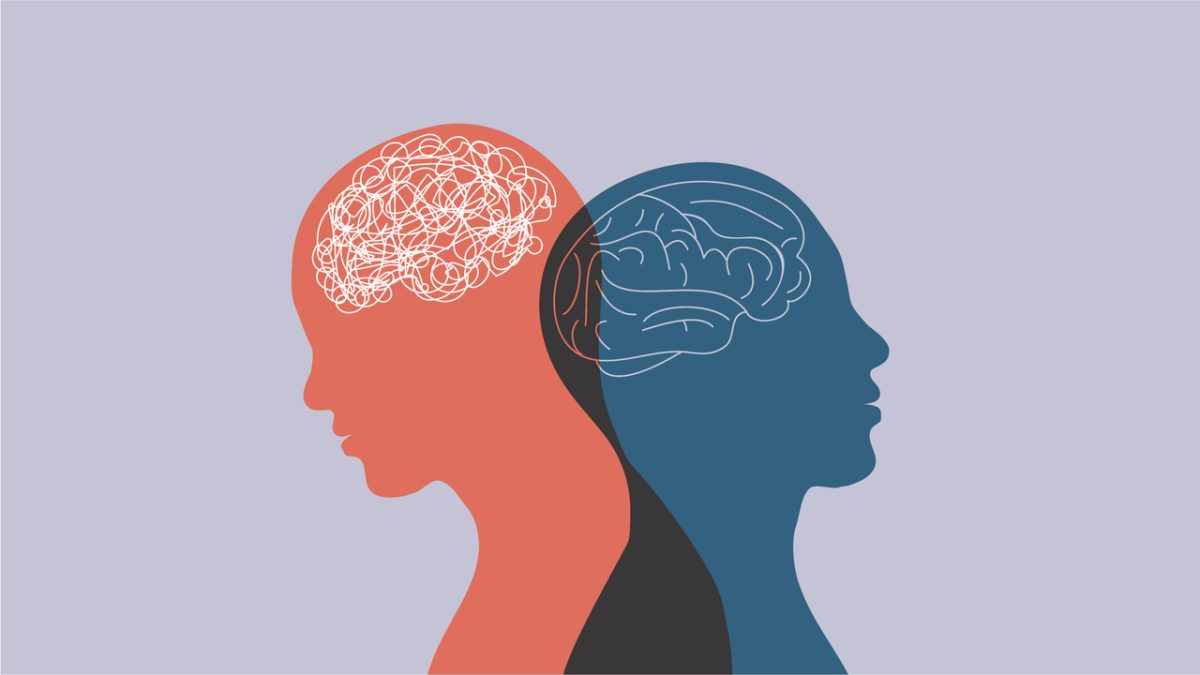I sat in the back of a police car as it took me down roads I had never seen before. As a former pizza driver, I thought I knew every address in Edmonton. The officers in the front seat said nothing, and, slowly, I was succumbing to the effects of powerful tranquilizing medication that had been forcibly administered to me in the Sturgeon General Hospital. Every part of me wanted to stay conscious while talking nonsense, desperately trying to find out what was happening to me and where I was being taken without being able to form the right words. I later learned I was being taken to Alberta Hospital, Edmonton, the main psychiatric facility in the region.
Alberta Hospital, at the time, was even more of a small city than it is now. It had 5,000 staff members, multiple buildings, residences for nurses, buildings for woodworking, a volunteer fire department, a water tower, even its own TV station and clothing store. It was a community all on its own, one that few people in Edmonton knew about, and fewer people wanted to admit existed. Even now when I give talks to college students, even those in mental health studies, few of them even know where Alberta Hospital is, much less have ever been there.
When I first went to AHE, I was 18 and very ill. I started out with severe depression and anxiety years before, with symptoms so severe they were crippling. I never asked for help or went to therapy. I treated my poor mental health with alcohol. Possibly because I hadn’t received treatment, the depression slowly manifested itself as schizoaffective disorder, a relatively rare combination of bipolar disorder and schizophrenia. I later learned I also had anxiety, a huge precursor for alcohol dependency.
My parents knew something was wrong and had tried everything they could. My mom had even offered to let me see her psychiatrist, but I declined, thinking I could hold everything in, tough it out. But having depression and anxiety is like being in a fishbowl watching the world go on around you, not realizing what water was, not being able to connect with anyone or understand what was wrong or what could stop you from feeling so awful.
So, after a breakdown, I ended up in Alberta Hospital on a secure ward, with hallucinations and delusional thoughts, mixed with depression and anxiety. I have to say the staff, for the most part, were incredible. In just a couple of months I got better. I improved enough to be released. But there was a problem.
I had lost the trust of my parents. I had been kicked out of school for missing too many classes. I could no longer afford my car and I had lost my job. Even my closest friends and any romantic prospects wanted nothing to do with me. Time and medication had made me sane again, but I had nothing. A short while later, I was living in a shelter and then a decrepit rooming house. Total frustration and denial made me go off my medications.
I often think about how if Alberta Hospital were located close to Edmonton’s core instead of far down back roads halfway to Fort Saskatchewan, it would greatly improve the lives of the patients who are now there. In my case, I may have been able to transition more easily back to the workplace or made up the school I missed. Having a psychiatric hospital move to the city would bring jobs to the area, everything from janitorial and food services to professionals of all sorts. But, most of all, it would help the people in the hospitals to feel more like they were regular human beings who just needed some support and medication rather than warehousing them in a place no one talks about. Whether or not a community psychiatric hospital would help with acceptance of people with illnesses is debatable; but, accepting people with mental illnesses into the mainstream of society isn’t.
The 12 years that followed my first experience with the hospital were troubled ones. I had times of clarity, periods of sanity. I met someone I cared about, I celebrated with friends and family. But I never was able to return to full-time employment and never managed to finish high school. Then, a miracle happened. I first thought it was going to be another dead end; I went into a group home setting where I was supported, monitored, fed well and my medication was administered under supervision.
Being supported in a group home in the neighbourhood of McCauley meant that I had access to everything any resident of Edmonton had, with a key difference. Living in a house with people who had mental illnesses and being supervised by people trained to deal with mental illness meant that I didn’t feel ashamed about being who I was. This was the time in my adult life when I really felt free to grow as a person, while I was getting proper treatment, and it was wonderful.
My time in the group home went on for 15 years. In that time, I self-published several books, travelled to visit my sister in Toronto, spent time on the West Coast and Northern Alberta, and found a job as a stagehand for major concerts.
I loved my stagehand job, and the people were amazing, but I desperately wanted to be a writer. While looking for new supports and opportunities, I was led to the Schizophrenia Society. I took a Wellness and Recovery course through the society and did well enough that the manager hired me to teach. My work with the Schizophrenia Society also gave me the opportunity to present to different school groups about my life experience with mental illness. Those groups very supportive, allowing me to bring my self-published books to these presentations to sell. Finally, I felt like I was using all my skills to do something meaningful — which would take me somewhere in life.
Something few people realize is that the yardstick we use to measure the worth of people with mental illnesses is long outdated. It used to be that if a person had a mental health issue, he, she or they were kept — for their own safety and the safety of others — in asylums, or even in dark rooms tucked away in family homes built to keep them from harm. A fact I learned giving presentations for the Society is that one in 100 have schizophrenia. When people see sensationalized news stories or over-embellished police dramas that show people with schizophrenia as violent or unstable, they don’t realize that in Alberta, 44,000 people have the illness. If all those people fit the definition of being unstable and violent, there would be chaos. You would be seeing stories of violent people with schizophrenia on the news… hourly.
In fact, a great deal of people with schizophrenia are properly treated and stabilized, but there are still many experiencing debilitating mental health issues who are homeless or marginally housed and untreated. I see them a lot more often now, yelling at shadows, looking as though they hadn’t washed in weeks. It can be very hard to get a homeless person into treatment of any kind. Often, that person is experiencing substance-abuse disorders that make the situation worse. What is needed is for adequate housing to be provided above all other concerns. Not just a few coins or a meal. These people need adequate shelter, an address. Otherwise, it is next to impossible to get them medical or psychiatric help. They need special supports and medication as well as monitoring from a psychiatric care team. To me, to leave them to wander the streets is the very height of cruelty.
There are people making a difference today, people doing things that weren’t done 30, 20 or even 10 years ago. I commend the efforts of our health services to expand awareness of mental illness and its effects, and in developing programs like the mental health crisis response team or the Early Psychosis Intervention Clinic set up to help young people before their situations force them into hospitalization. It is also commendable that Edmonton now offers supervised injection sites, methadone programs, and the distribution of naloxone kits that have saved countless lives.
What many people still don’t understand is that mental illness, addiction and homelessness are situations that feed off each other. Many people are homeless because they are mentally ill, and many mentally ill people use substances to mask their voices or depression. They need mental health support and other types of assistance to rejoin normal society.
One thing that many people don’t see is how deeply mental illness affects so many in our society. The Centre for Addiction and Mental Health in Ontario indicates that by the age of 40, half of Canadians experience mental illness. This also means one in five people will need mental health treatment in any given year.
During my teen years I was in the Air Cadets. When we went out camping in the bush, we would pair up with a buddy. We were told to keep asking our buddy questions like, “Are your socks dry?” and, regardless of the answer, we would have to put our hand in their boot and check to see if they did have dry socks. If we found wet socks, we had to stop and make them change. Making a difference with mental illness is the same as checking your buddy’s socks. One needs to take time to make sure your co-workers, friends, even family members are in a safe place with regards to their mental health, and if they aren’t, one must get them the help they need.
After all these years, (33 now, since I was first taken to the hospital in the back of a police car), I go back to Alberta Hospital every Monday and Wednesday. My sister, who helped support me the most next to my dad, can’t understand how I can do it. I do it not just because I have a job there now, I do it because by serving those who are underserved, I keep myself vigilant in dealing with my own mental illness.
On Mondays I get up early, board a bus before sunrise and transfer twice to get to the hospital. I work for The Learning Centre Literacy Association as a creative writing instructor. I use all my skills as a writer to empower my students, working with occupational therapists and recreational therapists. I hope my efforts help them to be able to express themselves through poetry and short stories gives them a temporary relief from the harsh reality of being in treatment. On Wednesdays I teach a group civics, or current events. I am proud to tell my students I was once in the same situation they were. I do have to tell them it took years of study and hard work to learn enough to teach others, but I emphasize I started where they did.
Twenty-one years ago, I had my final admission to Alberta Hospital. It was a very difficult time of my life; I had lowered the dose of a critical medication not understanding it would cause me to get more ill than I had ever been. I spent six long months in the hospital, but I realized something. I realized I had to take ownership of my own mental health.
Taking ownership meant I had to accept my illness and work with my doctors to find medications that worked for me and allowed me to live my life. And then I had to take the medications like my life depended on it because it did. And I realized that the hospital was not a bad place. I realized the only bad things about the hospital were the things that were going on in my own head.
I can never total up the things I lost over the years. What I do know is that mental illness is a part of me that I will never change. And I also know that I have my part-time job now because mental illness gave me the ability to be compassionate and helpful to people who have also experienced it. In some odd way, mental illness has been a blessing. I still hold out hope that not only advances be made in treatments, but also that more awareness and acceptance for people with mental illnesses occurs in our society. We have a place for the mentally ill in psychiatric wards and in large facilities like Alberta Hospital, but what is most needed is for us to have a place for these people in our hearts.
Savvy AF. Blunt AF. Edmonton AF.




